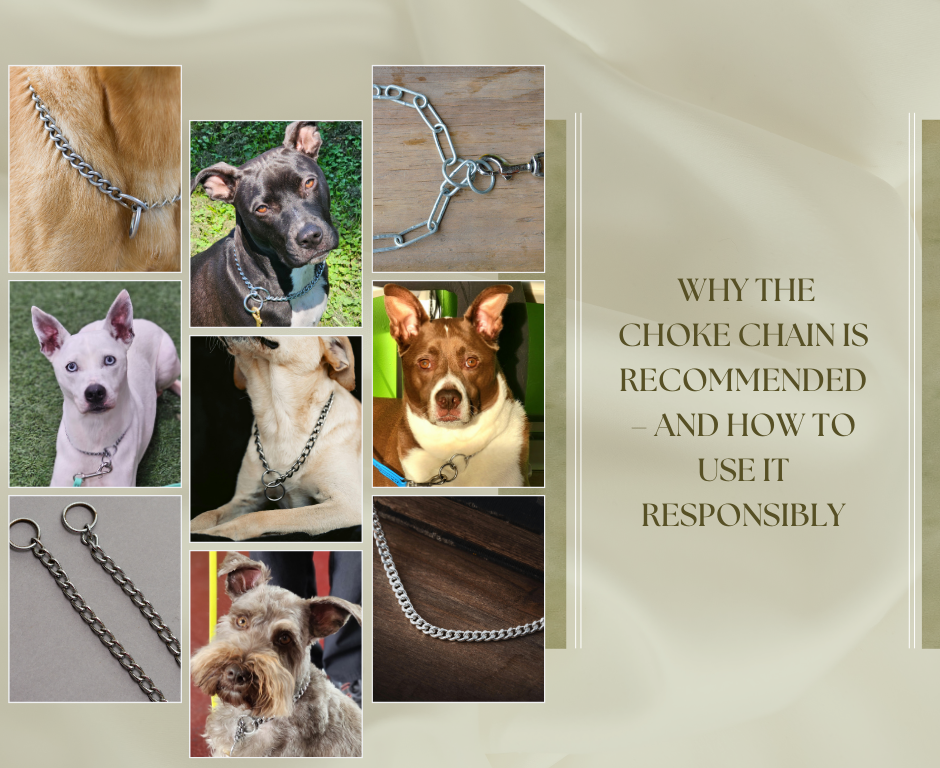Why the Choke Chain Is Recommended – And How to Use It Responsibly
April 21, 2025

What the Choke Chain Is Not
Let’s start with what it isn’t. A choke chain is not a tool for jerking, yanking, or punishing your dog. It’s not meant to hurt or scare them. When used improperly, like any training tool, it can cause confusion or discomfort. But when used correctly, it becomes a way to provide instant, pressure-based communication something dogs instinctively understand.
Why It Works
Dogs communicate physically especially with one another. Think of a mother correcting a puppy, or two dogs settling a disagreement. It’s fast, clear, and over quickly. The choke chain, when fitted and handled properly, mimics that kind of communication.
Here’s why it works:
It provides immediate feedback. The sensation is felt the moment the dog makes the wrong choice, no delay, no confusion.
It’s neutral. There’s no anger or emotion needed. You apply the correction and move on, allowing the dog to adjust its behavior.
It encourages the dog to take responsibility. Once they learn how to avoid the correction, the dog begins to choose the correct behavior on their own.
How It Works (When Used Properly)
The choke chain functions as a slip collar. When there’s tension on the leash, the collar tightens momentarily and then loosens immediately when the leash relaxes. It’s that moment of pressure and release that teaches the dog.
The key is in the timing and release.
The leash should never stay tight. A proper correction is quick and clean—pressure on, then pressure off. You’re not dragging the dog or holding tension. You’re offering feedback and then giving the dog space to try again.
The collar must be fitted correctly.
A choke chain should sit high on the neck, just behind the ears. If it hangs low or is too loose, the correction becomes less effective and can cause frustration or injury.
The leash handling should be calm and deliberate.
This isn’t about force. It’s about precision. You’re not trying to overpower the dog—you’re guiding their attention and offering a consequence for a poor choice. Think of it as punctuation, not a paragraph.
Why Not Use Other Tools Instead?
While there are plenty of training tools out there—harnesses, head halters, flat collars—the choke chain is one of the few that offers true cause-and-effect feedback without relying on constant restraint, distraction, or bribery.
When the goal is reliability in all environments, a tool that encourages the dog to think and take initiative is far more effective than one that just manages behavior.
Fairness Matters
This method isn’t about forcing obedience—it’s about creating thoughtful dogs who understand what’s expected and why it matters. The choke chain is simply a means of communication. It becomes fair and humane when:
It’s introduced thoughtfully.
It’s used as part of a structured training plan.
It gives the dog a clear path to success.
Conclusion
When used with skill and fairness, the choke chain is one of the most powerful tools for building lasting obedience. It speaks the dog’s language: fast, clear, and without drama. It doesn’t rely on fear—it relies on feedback. And in a balanced training system, that feedback is what helps dogs become focused, reliable, and confident decision-makers.